Accent plants can make a good bonsai display great. Bright accents can enliven a somber display; subtle accents can temper displays that are rife with color. They are the final element enlisted to enhance a display’s balance.
Unlike bonsai, there are few rules governing proper use. The primary guide I like to keep in mind is that accent plants must be full. Like skimpy trees, skimpy accents draw attention to what’s missing. And as accents are meant to complement and enhance displays, they need to be full.
Seasonal accents are often appreciated. Fortunately, because we tend to use accents that look good at exhibit time, we’re more likely to pick appropriate accents than we are inappropriate ones.
The following accent plants were displayed at BIB’s 11th annual exhibit.

Native to wet, shaded places in Japan, this accent is a good fit for an antique tile.
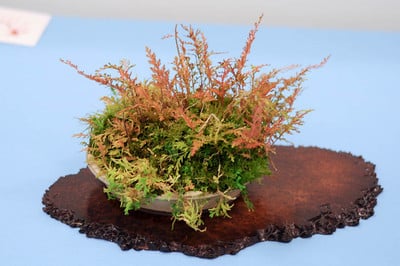
Large accents complement large displays.
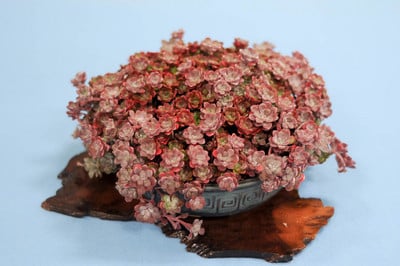
Reddish sedum provides good contrast color.
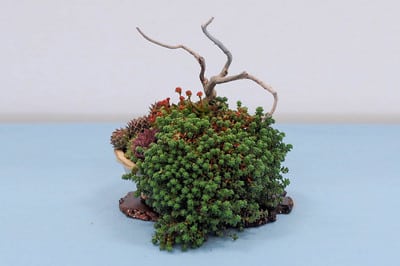
It’s perfectly acceptable for accents to spill outside of the pot.
There are a few important rules about accent placement. The greatest of these is direction. Accents always complement a specific element of a display. If that element is to the accent’s left, it better point left. While this isn’t an issue for evenly shaped accents, it becomes very important for more directional accents like the fern below.
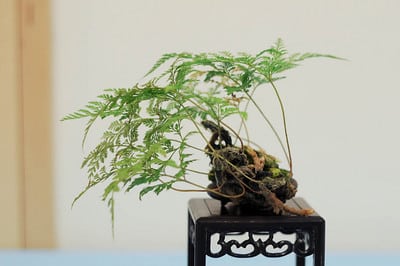
Rabbit foot fern
Accents can be displayed on a variety of items, from stands to slabs to ceramics to bamboo. The rule here is that the accent must not be displayed on a stand more formal than the stand for the bonsai it complements. Which makes sense, unless the point is to highlight the accent and downplay the bonsai – an unusual case. Quince slabs are some of my favorites.
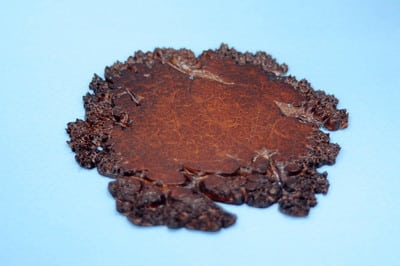
Quince slab
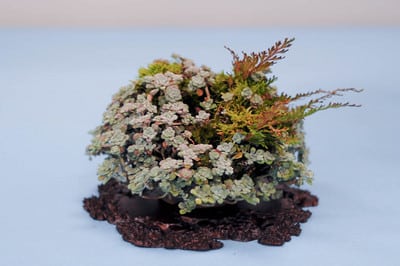
Slab with sedum accent. The slab could be a bit bigger – or the accent smaller.
Accents can be a lot of fun. Visitors to bonsai exhibits have likely seen junipers before. They’re less likely to have seen these:
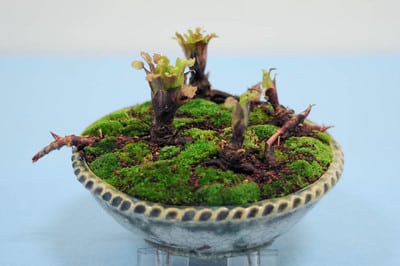
Swelling buds
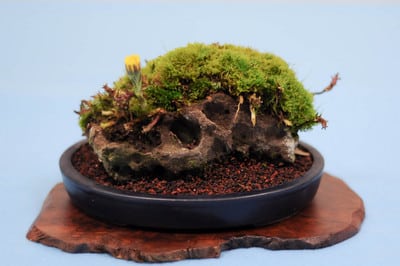
Moss and flower on lava rock
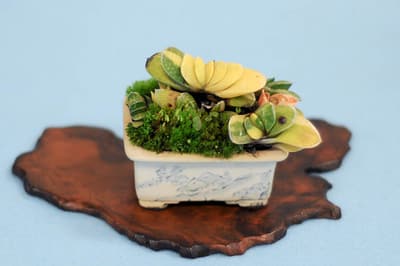
Accent for shohin
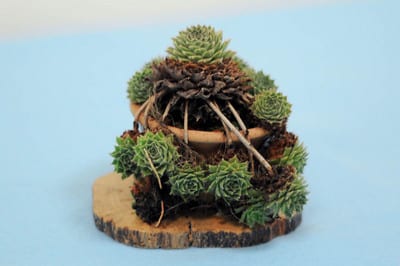
Chicks and hens
I’ve found that well-planted accents can look good for years with little effort. I’ve been using an ajuga now for almost 10 years that requires little more than removing a few brown leaves each year. Other creations require more time and effort. Well-planted accents can look good right out of the gates. But if an accent looks a bit skimpy, don’t hesitate to try again next year – it might be just right.
Subscribe to Bonsai Tonight
New Posts Delivered Every Tuesday and Friday
AlexV says
Great post Jonas. Accents are one of my favorite parts of a display. It gives us an excuse to grow all the cute little plants we want that don’t really fit into the catagory of “Bonsai.”
danbartonbonsaipots says
Lovely collection of Accent plants. In England and the rest of Europe, accent plants are being used more and more at bonsai shows to accompany the trees on display. You may care to have a look at some of mine on the URL below, and also some of our accent pots:
http://danbartonbonsaipots.wordpress.com/accent-plants/
cheers, Dan
xwires says
Thanks Dan – these are great shots of great accents. And well done on the pots!
danbartonbonsaipots says
Who is the artist that made these fabulous accent pots and arranged the very tasteful plantings?
xwires says
Hi Dan – these accents were all displayed at Bay Island Bonsai’s (BIB) exhibit this year. They were put together by BIB members. Glancing at the photos, the pots appear to be mostly from Japan with some from China and the US. I put one of them together (the sedum on the quince slab) around 10 years ago. The rest belong to other BIB members.